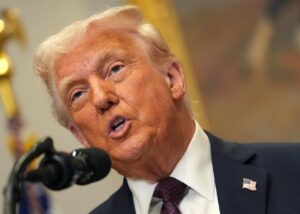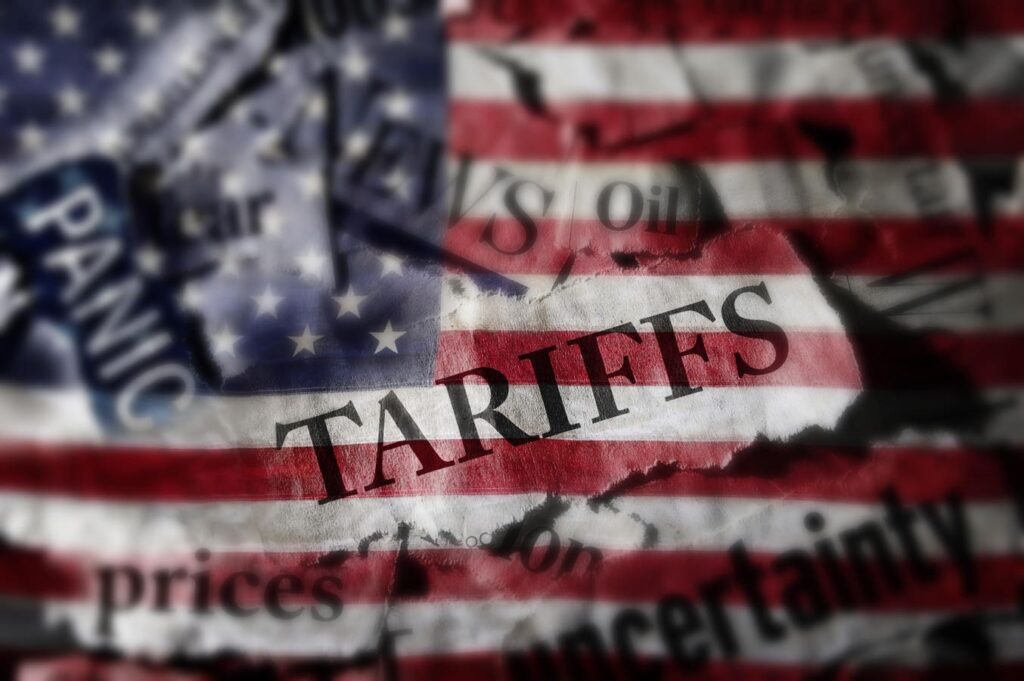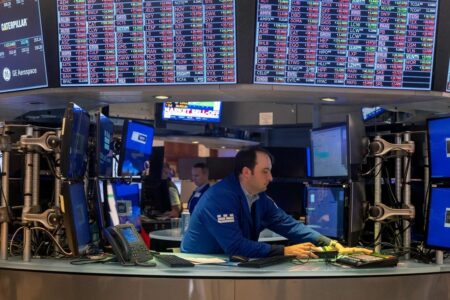The National Retail Federation delivered a reassuring message to retailers after President Trump’s reciprocal tariff announcement on April 2. Despite the implementation of tariffs, the NRF expects the inflation rate to remain at current levels of 2.5% as measured by the personal consumption expenditure index.
In addition, the retail industry is forecast to grow between 2.7% and 3.7% this year, above the 2.5% to 3.5% growth predicted last year. Ultimately, the retail market did better than that, pulling out a 3.6% increase. The NRF is projecting 2025 to end between $5.42 trillion and $5.48 trillion, excluding auto, gasoline and food service retailers.
Reading between the lines, the NRF is honing in on the 3.6% or better growth rate this year, as it emphasized the 2025 sales forecast compared with the 10-year pre-pandemic average of 3.6% sales growth. However, its forecast left room for the industry to come in below that.
Strong Economic Fundamentals
“Overall, the economy has shown continued momentum so far in 2025 – bolstered by low unemployment and real wage gains,” NRF president and CEO Matthew Shay said in a statement.
Acknowledging that consumer confidence is waning due to lingering inflation concerns and anxiety over tariffs, NRF chief economist Jack Kleinhenz affirmed, “Consumer spending is not unraveling.”
Meanwhile, the NRF opposes the new tariff policy on principle. Yet, its expectation that PCE inflation will remain at current rates doesn’t suggest we are going back to the hyperinflationary levels seen over the past few years.
There’s no question that consumers are spooked – “Significant policy uncertainty is weighing on consumer and business confidence,” Shay said. Yet, NRF’s growth forecast, based on hard data that is better than what it read in early 2024, should encourage the industry and consumers.
While Kleinheinz said, “We do expect slower growth,” the statement’s reference to the 10-year pre-pandemic 3.6% growth rate suggests that NRF expects things will get back to normal as the year progresses.
It could do even better if the Trump administration’s proposed tax cut comes to fruition – as Steve Forbes so vigorously supports – and the administration’s tariff policy and ongoing trade negotiations boost the U.S. economy, as promised.
Hard Versus Soft Data On Tariffs
Former Obama economic advisor and now president and CEO of the Federal Reserve Bank of Chicago Austan Goolsbee took to Fox News before the White House tariff announcement to provide a level-headed look at what the new tariff policy will mean.
“If you had a one-time tariff that increased the costs and stopped increasing them, and there is no retaliation, I think it would be, in theory, a transitory increase in inflation,” he said, adding that “Tariffs could be transitory, as opposed to inflation.”
Consumers have a fear that the tariffs mean the economy is headed back to the overheated inflation rates of 2021 and 2022. However, Goolsbee stated that imports are only about 11% of the economy.
“So tariffs on just a small sliver of the economy might not have a material impact in the macro sense,” he asserted. “And in 2018, we had tariffs. Inflation didn’t go up.”
His read of the underlying strength of the hard economic data jives with the NRF, but then consumers and small business owners aren’t trained economists. Their decisions are guided by the so-called “soft data” or how they feel about the economy and they aren’t feeling good right now.
“The soft data looks very different from the hard data. The discrepancy between what the people say and what the hard numbers show, it’s about as big as it’s ever been in modern memory,” he asserted.
The biggest problem American consumers and businesses face right now is the uncertainty. “If the consumers stop spending or businesses stop investing because they are uncertain or they’re afraid about where we’re headed, that would be a bit of a mess.”
Wild Card In Ending De Minimus Tax Exception
Buried in the tariff executive order was the ending of the de minimus tax exception for imports coming from China. The de minimus exception was instituted back in 1938 and currently allows for goods valued at or under $800 per day per person to be exempt from duties or import taxes.
The new de minimus order takes effect on May 2 to allow the Commerce Department to set up systems to process and levy appropriate duties on low-value imports from China.
Chinese discount retailers like Shein and Temu and many Amazon, Walmart, Shopify and other marketplace retailers have exploited the de minimus exception to their advantage. For example, Forever 21 put some of the blame for its recent bankruptcy on competition from Shein and Temu.
The de minimus exception created an unfair competitive advantage for Chinese-based retailers. The U.S. Customs and Border Protection Agency reports that the number of shipments entering the U.S. under the exception more than doubled since 2020, up from only 637 million in 2020 to over 1.36 billion shipments in 2024.
The new order will also impact many third-party sellers on Amazon’s marketplace. Marketplace Pulse research reports that China-based sellers represent nearly 50% of the top 10,000 sellers on Amazon in the U.S., a group that contributes almost half of the third-party gross merchandise value on Amazon. U.S.-based sellers account for only about 45% of top sellers and their number may be inflated by many Chinese-based sellers in the U.S.
Canceling the de minimus exception could level the playing field for U.S.-based retailers that have seen their market share plummet from the deep discounts offered by Chinese-based retailers and marketplace sellers.
The NRF worked a modest slowdown in non-store and online sales growth into its forecast, expecting growth in the 7% to 9% range this year, after advancing 8.1% last year.
Stay Calm And Carry On
“Anyway you look at it, a lot is riding on the consumer,” NRF’s Kleinhenz said. Ultimately, the future for retail this year rests in their hands.
It’s going to come down to a battle between the hard and the soft data, as Kleinhenz noted back in 2023 when there was a similar divergence in consumer sentiment and the economic fundamentals.
“Depending on which data you view, you get two different angles on the state of the consumer. While it’s difficult to reconcile these views, what we’ve learned over the last several years is don’t count the American consumer out—at least not yet,” he concluded.
Read the full article here
















